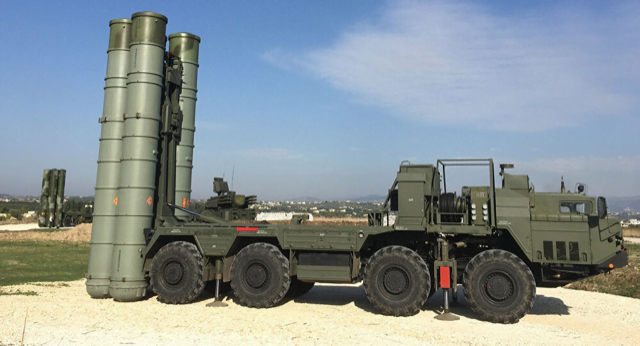The Big Picture- RSTV, UPSC Articles
7th Anniversary of India’s Mars Mission
Archives
TOPIC: General Studies 3:
- Awareness in the field of Space – Space Missions
- Indigenization of technology and developing new technology
The Mars Orbiter Mission (MOM), commonly referred to as Mangalyaan-1, is a space probe launched by the Indian Space Research Organization (ISRO) on November 5, 2013.
- The indigenously-built space probe, which is India’s first interplanetary mission, has been in the Martian orbit since September 24, 2014.
- The mission which is aimed at studying Martian atmosphere helped the ISRO to enter the elite group of space agencies including the Soviet Space Program, NASA and the European Space Agency to reach Mars.
- India is the first Asian nation to reach the Mars orbit and the first in the world to achieve it on its first attempt.
MOM was launched aboard PSLV C-25 (an XL version of the PSLV), one of the world’s best and reliable launch vehicles. The spacecraft is based on the modified I-1-K satellite bus of ISRO which proved its reliability over the years in similar missions like Chandrayaan-1, the IRS and INSAT series of satellites. It carried 850 kg of fuel and 5 science payloads including a Mars Color Camera (MCC) which it has been using to study the Martian surface and atmosphere since entering the orbit successfully.
- The spacecraft is tracked by the Indian Deep Space Network (IDSN), located near Bengaluru and complemented by NASA-JPL’s Deep Space Network. MOM showcased India’s spacecraft building, rocket launch systems and operation capabilities. The mission’s primary objective is to develop technologies required in planning, designing, management and operations of an interplanetary mission.
- The secondary objective is to explore Martian surface features, mineralogy, morphology and atmosphere using indigenous scientific instruments. Initially planned for a lifetime of 6 months, ISRO extended the mission to another 2-3 years in April 2015 because of the adequate quantity of fuel still left in the spacecraft. Till December 2015, the MOM had completed over 8000 orbits of Mars.
Learnings from MoM
- Helped India’s space agency prepare a Martian Atlas based on the images provided by the orbiter
- Dust storms on the Martian can rise up to hundreds of kilometres
The MOM is the only Martian artificial satellite that could image the full disc of Mars in one view frame and also image the far side of Deimos. The data from MOM has helped produced 23 publications in peer-reviewed journals.
Two moons of Mars: Phobos and Deimos
Endeavors by other countries
UAE: UAE launched the Arab world’s first mission to Mars – Amal (Hope)
- Took place from the Tanegashima Space Center, Japan, aboard a Mitsubishi Heavy Industries’ H-II A rocket.
- Carrying three instruments including a high-resolution camera and a spectrometer, the spacecraft is on an orbital mission to collect data on Martian climate dynamics and help scientists understand why Mars’s atmosphere is decaying into space.
- Hope is the UAE’s fourth space mission and first interplanetary one. The previous three were all Earth-observation satellites.
China: Is planning its first Mars probe, Tianwen-1 (formerly Huoxing 1)
- It consists of an orbiter, a lander and a rover and aims to study Martian topography and geology and determine the composition of the surface material, climate and environment.
- Will use high-resolution cameras to search for a suitable landing site somewhere in the Utopia Planitia region. It weighs around 240 kg and will carry cameras, a subsurface radar, a spectrometer, a magnetometer, and atmospheric sensors.
The USA: The only country that has sent previous missions to Mars, had planned its Perseverance mission on July 30.
- Will look for signs of habitable conditions on Mars and microbial life in its ancient past. Over its mission duration of one Martian year (687 Earth days), it will collect Martian rock and sediment samples for analysis on Earth.
- The rover is equipped with specialised equipment to collect data, analyse weather conditions that can help plan for future human missions, and produce oxygen from the carbon-dioxide-rich atmosphere.
PSLV Technology
- Polar Satellite Launch Vehicle (PSLV) is the third generation launch vehicle of India.
- It is the first Indian launch vehicle to be equipped with liquid stages.
- It is a four-staged launch vehicle with first and third stage using solid rocket motors and second and fourth stages using liquid rocket engines.
- The PS4 is the uppermost stage of PSLV, comprising of two Earth storable liquid engines.
- The third stage of PSLV is a solid rocket motor that provides the upper stages high thrust after the atmospheric phase of the launch.
- PSLV uses an Earth storable liquid rocket engine for its second stage, know as the Vikas engine, developed by Liquid Propulsion Systems Centre.
- PSLV uses the S139 solid rocket motor that is augmented by 6 solid strap-on boosters.
- PSLV uses 6 solid rocket strap-on motors to augment the thrust provided by the first stage in its PSLV-G and PSLV-XL variants. However, strap-ons are not used in the core alone version (PSLV-CA).
- Initially, PSLV had a carrying capacity of 850 kg but has been enhanced to 1.9 tonnes.
- It comes in the category of medium-lift launchers with a reach up to various orbits, including the Geo Synchronous Transfer Orbit, Lower Earth Orbit, and Polar Sun Synchronous Orbit.
- All the operations of PSLV are controlled from the Satish Dhawan Space Center, Sriharikota.
Must read: The uncharted territory of outer space
Connecting the Dots:
- What is PSLV technology? Discuss. What has been the progress with respect to indigenisation of PSLV technology? Examine.
- Indian space startups have got huge potential. However, there are many challenges that need to be overcome to get into the league of global space giants like the SpaceX. Comment.












